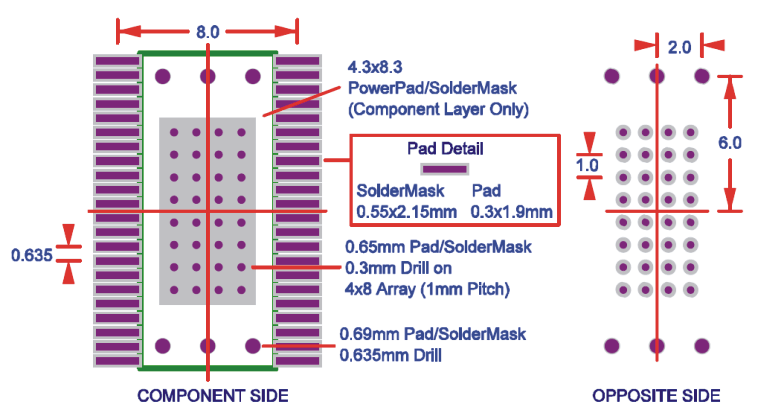SLES242G December 2009 – December 2014 DRV8412
PRODUCTION DATA.
- 1 Features
- 2 Applications
- 3 Description
- 4 Revision History
- 5 Pin Configuration and Functions
- 6 Specifications
- 7 Detailed Description
- 8 Application and Implementation
- 9 Power Supply Recommendations
- 10Layout
- 11Device and Documentation Support
- 12Mechanical, Packaging, and Orderable Information
Package Options
Mechanical Data (Package|Pins)
- DDW|44
Thermal pad, mechanical data (Package|Pins)
- DDW|44
Orderable Information
10.3.1 DRV8412 Thermal Via Design Recommendation
Thermal pad of the DRV8412 is attached at bottom of device to improve the thermal capability of the device. The thermal pad has to be soldered with a very good coverage on PCB in order to deliver the power specified in the datasheet. The figure below shows the recommended thermal via and land pattern design for the DRV8412. For additional information, see TI application report, PowerPad Made Easy (SLMA004) and PowerPad Layout Guidelines (SOLA120).
 Figure 23. DRV8412 Thermal Via Footprint
Figure 23. DRV8412 Thermal Via Footprint